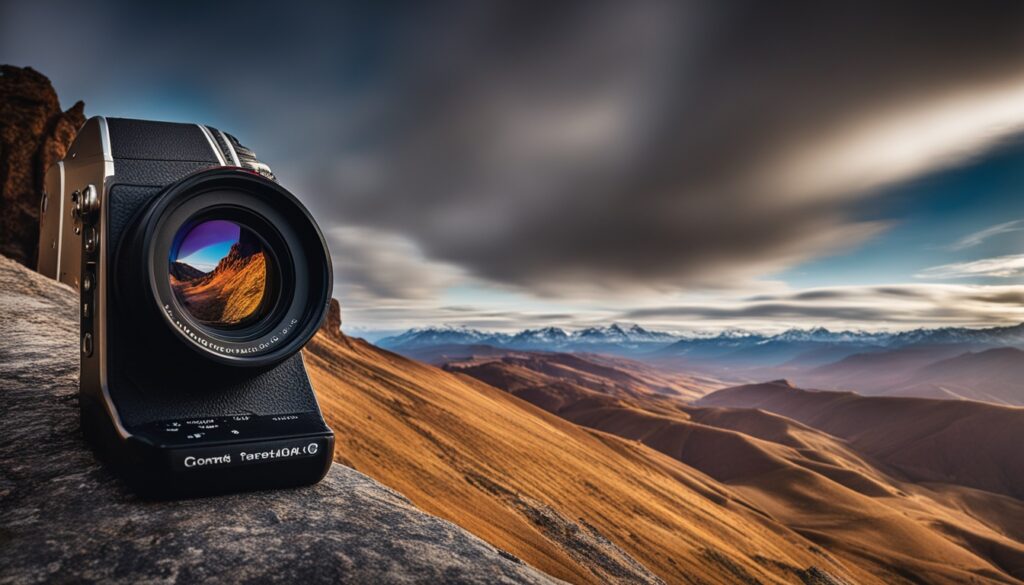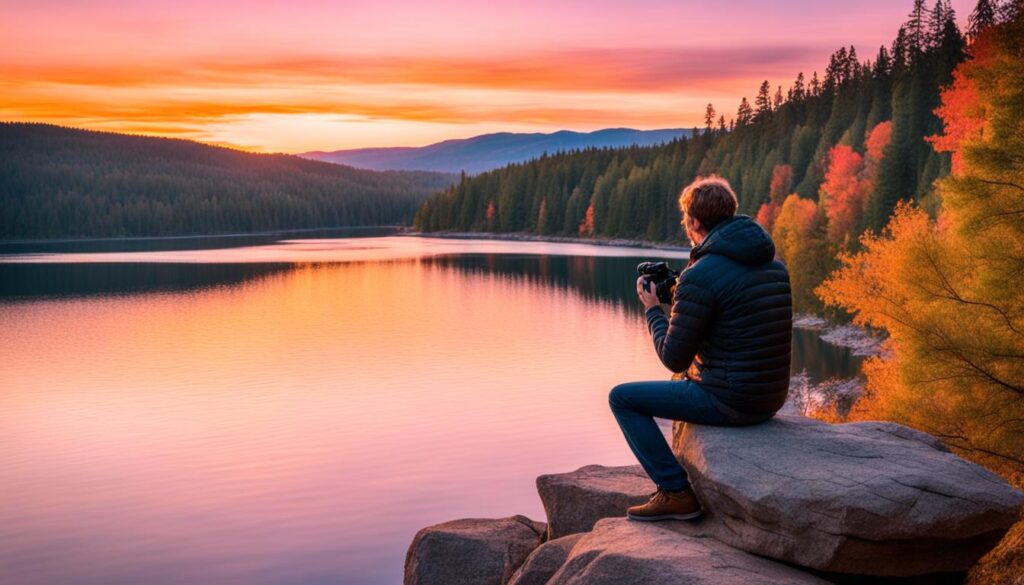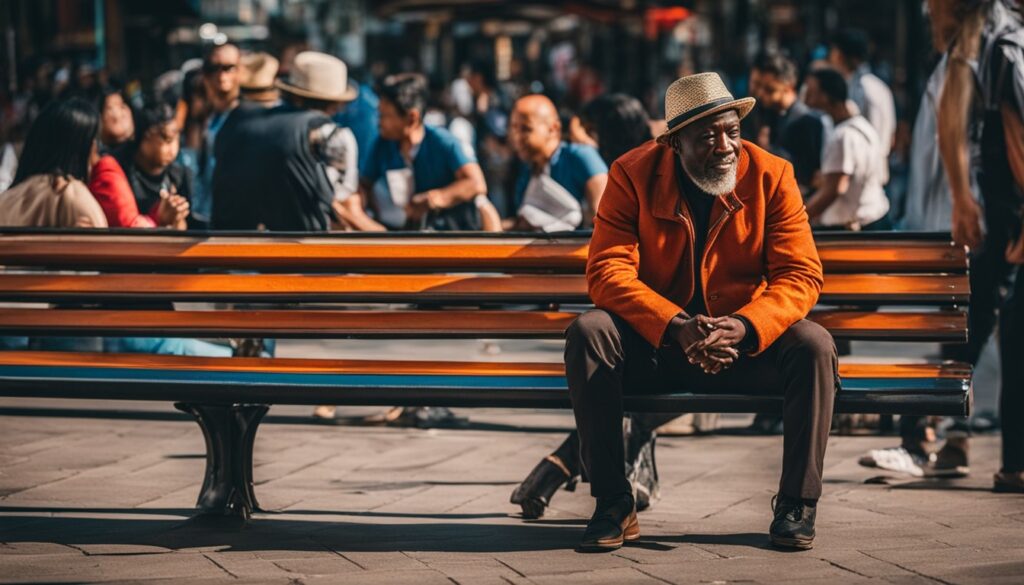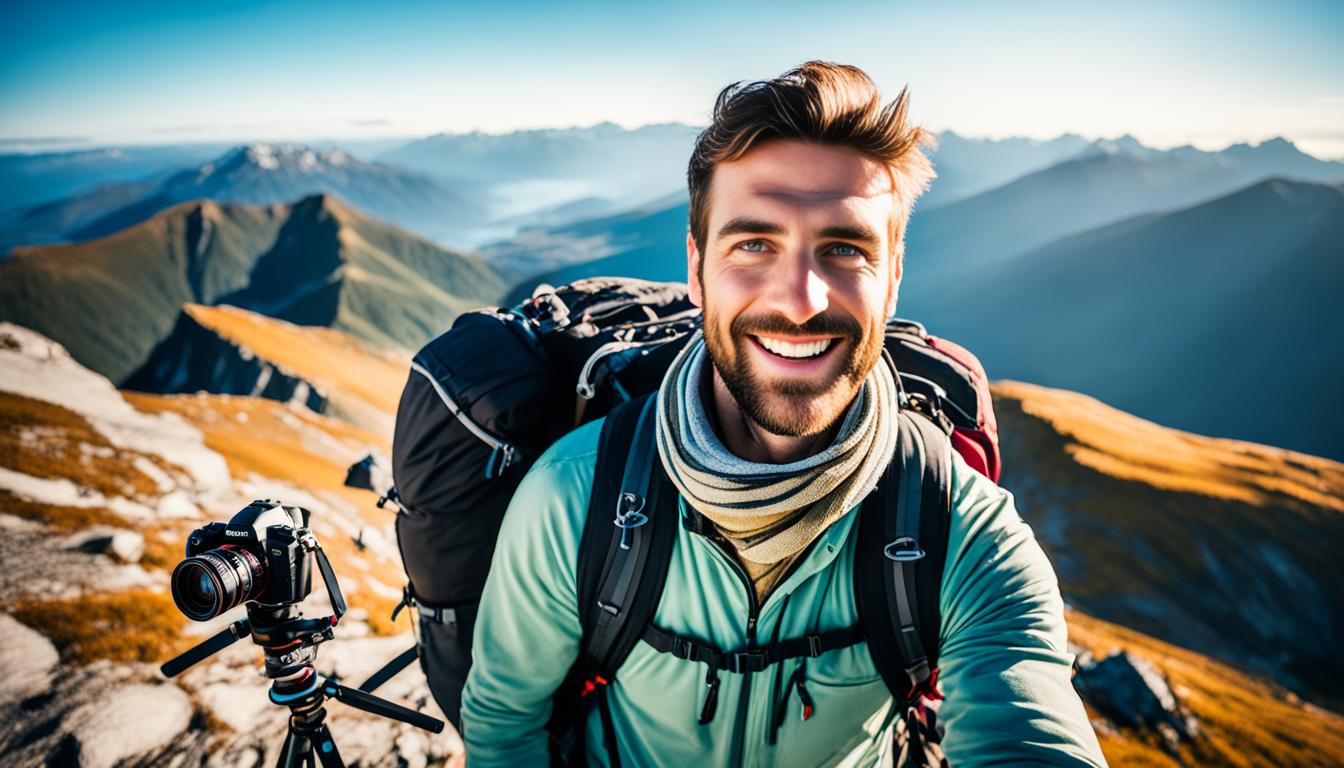Have you ever wondered how some travelers manage to capture such breathtaking photos that seem to perfectly encapsulate the essence of a place? The magic lies in mastering the art of travel photography. Whether it’s capturing scenic shots at golden hour or documenting candid moments bursting with authenticity, there’s a skill set behind every stunning image. This article delves into the intricacies of travel photography tips, offering invaluable photography advice to help you immortalize your journey and create memories you can cherish forever.
Key Takeaways
- Mastering the use of your photography equipment is crucial for capturing high-quality images.
- Understanding the best times to shoot landscapes, such as during golden hour, can elevate your photos.
- Candid moments offer a genuine glimpse into the spirit of your travel experiences.
- Editing techniques play a significant role in enhancing the visual appeal of your photographs.
- Sharing your travel snapshots through blogging can engage and inspire a broader audience.
Understanding Your Photography Gear
Mastering travel photography requires more than just a keen eye; it demands a solid understanding of the best photography gear to capture those perfect shots. From camera selection to essential lenses, and must-have photography accessories, each component plays a crucial role in translating your vision into stunning images.
Choosing the Right Camera
When it comes to camera selection, the key is to find a balance between portability, image quality, and functionality. Whether you opt for a DSLR, mirrorless camera, or a compact point-and-shoot, your choice should complement your travel style. Renowned brands like Canon, Nikon, and Sony offer a range of options that cater to different needs and preferences.
An important consideration in camera selection is the sensor size, which can significantly affect image quality. Full-frame cameras are excellent but tend to be bulkier, while APS-C and Micro Four Thirds systems offer a more compact and travel-friendly option without compromising too much on performance.
Essential Lenses for Travel Photography
The choice of travel lenses can make or break your travel photography experience. A versatile zoom lens like the 24-70mm f/2.8 is indispensable for capturing a wide range of subjects, from landscapes to portraits. For those inclined towards more specialized photography, a prime lens such as a 50mm f/1.8 can provide superior image quality and low-light performance.
Consider adding a lightweight telephoto lens to your kit for those detailed shots of distant subjects, whether it’s wildlife or architectural elements. Wide-angle lenses, essential for capturing expansive landscapes or cityscapes, should also be part of your travel lenses selection.
Must-Have Accessories
Complementing your camera equipment with the right photography accessories can substantially enhance your shooting potential. A sturdy, compact tripod is essential for low-light scenarios and achieving those sharp, stable shots. Filters, such as polarizers and neutral density filters, help manage light and magnify the visual appeal of your images.
Don’t forget the small yet crucial accessories: extra memory cards, batteries, and a reliable camera bag to safely transport all your gear. These elements are the unsung heroes of your photography arsenal, ensuring that you’re always prepared to capture that perfect moment.
Mastering Composition Techniques

In the realm of travel photography, mastering composition techniques is pivotal in transforming mundane snapshots into compelling visual narratives. Proficient use of these techniques endows photos with structure and allure, captivating the viewer’s attention.
Rule of Thirds
The Rule of Thirds is a fundamental composition technique that enhances the balance and focus of a photograph. This method involves dividing the frame into a grid of nine equal parts and positioning the subject along the lines or at the intersections. By doing so, photographers can create a more engaging and dynamic composition, naturally drawing the viewer’s eye to the main focal points.
Leading Lines
Leading lines are potent tools in travel photography, guiding the viewer’s gaze through the image and adding depth and perspective. These lines can be anything from roads and rivers to architectural elements, directing attention to the subject or creating a sense of movement within the frame. The judicious use of leading lines enriches the narrative of the photograph, making it more immersive.
Symmetry and Patterns
Symmetry in photography brings a sense of balance and harmony to an image, while photographic patterns create visual interest through repetition. Whether capturing the symmetrical grandeur of a historical building or the rhythmic patterns of nature, these elements introduce order and aesthetic appeal to the composition. By incorporating symmetry and patterns, photographers can create visually pleasing images that resonate with viewers.
Embracing these composition techniques—Rule of Thirds, leading lines, symmetry, and photographic patterns—equips photographers with the ability to craft images that are not only aesthetically appealing but also emotionally evocative. Each technique offers a unique perspective, contributing to the rich tapestry of travel photography.
Best Practices for Landscape Photography

Mastering landscape photography requires a deep understanding of light, stability, and composition. These elements are essential for capturing nature’s beauty in its most authentic form. Utilizing techniques like shooting during the golden hour or blue hour, employing a tripod for stability, and creating panoramic shots can significantly enhance the quality of your landscape photography.
Golden Hour and Blue Hour Photography
Shooting during the golden hour, which occurs shortly after sunrise and before sunset, provides warm, diffused light that can transform ordinary landscapes into extraordinary scenes. Similarly, the blue hour, which transpires shortly before sunrise and after sunset, offers a cooler, soft light that can create a serene and ethereal atmosphere in your photos. These times of day are ideal for capturing landscape photography with a natural, magical glow.
Using a Tripod for Stability
Photographic stability is crucial for achieving sharp, clear images. Using a tripod allows photographers to eliminate camera shake, particularly in low-light conditions or when shooting long exposures. This stability is vital during golden and blue hour photography, as well as when creating intricate compositions that require consistent framing.
Capturing Panoramic Views
Panoramic shots enable photographers to capture the vastness of a scene, stitching multiple images together to create a cohesive, wide-angle view. This technique is particularly effective in landscape photography, where the expanse of nature’s beauty can be fully appreciated. To achieve optimal results, it is advisable to use a tripod for stability and ensure consistent exposure across all shots to facilitate seamless merging in post-processing.
By integrating these best practices, photographers can elevate their landscape photography, capturing breathtaking scenes with unparalleled precision and artistry.
Capturing the Essence of Adventure Photography
Adventure photography embodies the thrill and excitement of exploring the unknown. This form of photography demands a unique set of skills and approaches to perfectly capture the essence of action-packed moments and extreme environments. Whether navigating treacherous terrains or freezing high-speed moments, each shot tells a bold story of courage and discovery. Let’s delve into the techniques and safety measures that can help photographers thrive in such exhilarating conditions.
Action Shots and Motion Blur
Action shots are the backbone of adventure photography, capturing moments of intense activity and motion. One way to enhance these shots is through the motion blur effect, which adds a sense of speed and dynamism to the scene. This effect can be achieved by adjusting the shutter speed to allow for some movement within the frame while keeping key elements in sharp focus. This technique is particularly effective in scenes involving fast-moving subjects such as athletes, animals, or vehicles.
Documenting Extreme Environments
Photographers who venture into extreme environments often face unpredictability and harsh conditions. Whether it’s scaling a towering mountain, trekking through dense jungles, or navigating icy landscapes, capturing the raw beauty and challenge of these settings requires robust gear and a keen eye. Photographers must be prepared to endure and adapt, ensuring their equipment is weatherproof and they have contingency plans for any scenario. Successful documentation of such environments offers a majestic glimpse into places seldom seen, highlighting their magnificence and treachery.
Safety Tips for Photographers
While adventure photography provides thrilling opportunities, photographer safety remains paramount. Here are some essential tips to ensure safety without compromising on capturing stunning images:
- Preparation: Research the environment beforehand and pack appropriate gear, including waterproof and shockproof equipment.
- Stay Informed: Keep abreast of weather conditions and potential hazards.
- Buddy System: Never venture alone. Having a companion can provide critical assistance in emergencies.
- Navigation Tools: Carry maps, a GPS device, and a reliable communication device.
- Health Precautions: Bring a first aid kit and ensure you have the necessary vaccinations and medications for the area.
Incorporating these safety measures allows photographers to focus on capturing the spirit of adventure, mitigating risks while bringing back awe-inspiring images from their daring escapades.
Travel Photography: Capturing Candid Moments

Travel photography reaches its zenith when candid photography unearths spontaneous shots that narrate authentic travel moments. These fleeting instances often hold the key to storytelling through photography, as they capture the genuine essence of places and people.
One technique to master candid photography is to blend into the surroundings, becoming an unnoticeable observer. This allows photographers to document spontaneous shots without intruding on the natural flow of the scene. The genuine expressions and interactions captured in these moments form the cornerstone of authentic travel moments.
“The power of candid photography lies in its ability to convey the unspoken stories of a traveler’s journey. The unplanned, raw moments offer a glimpse into the heart of the adventure.”
Employing a discreet approach can yield extraordinary results. For instance, using a longer lens to capture subjects from a distance, provides a sense of intimacy without disrupting the scene. This technique is instrumental in storytelling through photography, as it preserves the authenticity of the moment.
- Observation: Stay vigilant and attuned to spontaneous events.
- Patience: Wait for the perfect authentic travel moments to unfold.
- Distance: Utilize strategic positioning to remain unobtrusive.
To encapsulate the true spirit of a place, candid photography requires sensitivity and an eye for detail. The resulting images are often rich with context and emotion, weaving compelling stories that resonate deeply with viewers.
| Technique | Benefit |
|---|---|
| Discreet Observation | Captures genuine moments without intrusion |
| Longer Lenses | Photograph from a distance, maintaining the scene’s authenticity |
| Patience | Wait for spontaneous events to naturally unfold |
Creating Impactful Photo Essays
Storytelling through imagery is an intricate craft that breathes life into photo essays. This approach transforms static photos into a dynamic, emotive experience. Whether capturing the essence of a festival, the stillness of nature, or the bustle of city life, visual storytelling offers an immersive narrative that text alone cannot convey.
Telling a Story through Photos
To tell a compelling story through photos, begin with a clear narrative structure. Just as a written story has a beginning, middle, and end, so should your photographic narratives. Start by identifying the key elements of your story – the characters, the setting, and the plot. Each photo should contribute meaningfully to the overall tale, creating a cohesive and impactful visual storytelling experience.
Shot List Planning
Meticulous shot list preparation is essential for successful photo essays. This involves planning ahead to ensure a comprehensive array of shots that collectively narrate your story. Consider including a mix of wide shots for context, medium shots to emphasize subjects, and close-ups for detail. This variety enriches the visual experience and ensures that every aspect of the story is covered.
Editing for Narrative Impact
Photo editing for impact is the final and crucial step in crafting your photo essays. Editing is not just about enhancing the aesthetics but also about reinforcing the narrative. Carefully curate your selection of images, adjust the color tones, and fine-tune the composition to highlight the intended message. Thoughtful editing underscores the theme and guides viewers through a more engaging and evocative photographic journey.
Creating photographic narratives that resonate requires a blend of strategic planning and creative prowess. By honing these skills, photographers can produce photo essays that leave a lasting impression on their audience.
| Aspect | Description |
|---|---|
| Story Structure | Organize photos with a clear beginning, middle, and end. |
| Shot List Preparation | Plan a diverse range of shots to cover all aspects of the narrative. |
| Editing for Impact | Enhance and refine images to reinforce the story’s theme and message. |
Photo Editing Techniques for Stunning Results
In the digital age, mastering photo editing techniques is crucial for transforming your travel photos into stunning visual narratives. This section guides you through choosing the right editing software, making basic adjustments, and employing advanced techniques to bring out the best in your images.
Choosing the Right Software
The first step in refining your travel photos is to select suitable editing software. Industry giants like Adobe Photoshop and Lightroom remain top choices for their versatility and powerful tools. Adobe Lightroom, in particular, can automate up to 80-90% of the editing process with its Rapid Editing feature, significantly reducing the time needed to process and edit thousands of photos from hours down to mere minutes.
Basic Editing Adjustments
Basic editing adjustments are essential for enhancing the visual appeal of your photos. Simple tweaks such as cropping, adjusting exposure, and color correction can elevate an ordinary photo to a professional level. For instance, from a trip to Atlantic Canada, where over a thousand photos were brought back, basic editing narrowed them down to about 10 keeper photos.
Advanced Techniques: HDR, Filters, and More
For those looking to delve deeper into the realm of photo editing, advanced techniques such as HDR photography and the use of photographic filters can add exceptional detail and dimension to your work. HDR photography is particularly useful for landscape shots, capturing a broader range of light and shadow in the image. Additionally, software like Lightroom allows you to produce multiple creative versions of a single photograph using two-level editing, offering three distinctive interpretations of one image. The workflow for travel photography can be further streamlined with features like the SYNC SETTINGS functionality, which synchronizes edits across multiple keeper photos for consistent results.
Tips for Travel Blogging and Sharing Your Photos
In today’s increasingly digital world, travel blogging and photo sharing play a pivotal role in how travel enthusiasts showcase their adventures. Selecting the right social media platforms, engaging your audience effectively, and promoting your work are key factors in gaining visibility and traction online.
Choosing the Right Platform
Deciding where to share your travel photos is crucial for maximizing reach and impact. Platforms like Instagram and Pinterest are excellent for photo sharing, thanks to their visual-centric interfaces. Blogs on WordPress or Medium can offer more in-depth storytelling opportunities. Each platform caters to different audience demographics, so understanding who you want to engage with can influence your choice significantly.
Engaging Your Audience
Audience engagement is essential for building a loyal following. Connect with your audience by sharing personal anecdotes, posing questions, and responding to comments. Utilize social media platforms like Facebook and Instagram Stories to create interactive content. Authenticity resonates well with readers, making them more likely to return and engage with your future posts.
Promoting Your Work Effectively
Promotion is the final piece of the puzzle. Utilize SEO techniques for your blog posts to increase discoverability. Cross-promote on various social media platforms to reach a broader audience. Creating compelling descriptions and utilizing relevant hashtags can exponentially increase the visibility of your travel photographs, transforming simple posts into viral content.
- Utilize SEO techniques: Keywords help your blog posts rank higher in search engine results.
- Cross-promote on different platforms: Share your blog links on Instagram, Facebook, and Twitter.
- Use hashtags effectively: Relevant hashtags can make it easier for new audiences to find your content.
| Platform | Best For | Audience Demographics |
|---|---|---|
| Visual stories | 18-34 years old | |
| Inspirational content | 25-44 years old | |
| WordPress | Detailed blogs | 25-45 years old |
| Community engagement | 30-50 years old |
Conclusion
As we conclude our exploration of travel photography, it’s essential to embrace the myriad insights gained throughout this journey. From understanding the art of composition and mastering the use of photography gear to capturing the essence of candid moments and editing for stunning results, each element plays a crucial role in creating memorable travel imagery. This refined grasp of techniques not only enhances the visual narrative but also deepens the connection to the experiences documented.
The journey of a travel photographer is as dynamic as the adventures themselves. The fusion of preparation, technique, and storytelling encapsulates the multifaceted nature of travel photography. Whether you are capturing the golden hour in a serene landscape or the pulse-pounding action of an adventure, each frame you immortalize tells a story of your photographic journey. These carefully curated moments offer a window into the soul of the places visited and the emotions encountered.
Travel photography is more than just a hobby; it is a means of celebrating and cherishing life’s journeys. By sharing these visual tales, photographers connect with like-minded individuals, inspiring others to explore and appreciate the world’s beauty. The insights shared in this article serve as a testament to the wonders that can be captured through the lens, encouraging both novice and seasoned photographers to continue their pursuit of capturing the journey. As you venture forward, let your photographs be a canvas that reflects the spellbinding essence of global exploration.
FAQ
What are some essential travel photography tips for capturing amazing memories?
How do I choose the right camera for travel photography?
What are the essential lenses for travel photography?
Which accessories are must-haves for travel photography?
What is the Rule of Thirds in photography?
How can leading lines improve my travel photography?
Why are symmetry and patterns important in photography composition?
What are the golden and blue hours in landscape photography?
How does using a tripod improve landscape photography?
What are the best practices for capturing panoramic views?
How can I effectively capture action shots and motion blur in adventure photography?
How do I document extreme environments in adventure photography?
What safety tips should photographers keep in mind during adventures?
What techniques are best for capturing candid moments in travel photography?
How can I create impactful photo essays?
What are some basic editing adjustments to improve travel photos?
What advanced photo editing techniques can elevate my images?
How can I choose the best platform for travel blogging and sharing my photos?
How can I effectively engage my audience in my travel blog?
What strategies can help in promoting my travel photography work?
Source Links
- https://www.macobserver.com/iphone/what-to-talk-about-on-facetime/
- https://cw39.com/oilgas/3-84-million-in-dividends-going-to-texas-workers-compensation-group-for-gains-on-keeping-workers-safe/
- https://www.washingtonpost.com/sports/auto-racing/2024/05/23/indianapolis-500-indycar-rain-castroneves/9de96c50-193e-11ef-97db-d9db0c732407_story.html

[…] In a world brimming with hidden gems and thrilling adventures, it’s possible to embark on affordable vacations and budget-friendly trips that offer memorable experiences without breaking the bank. From the […]